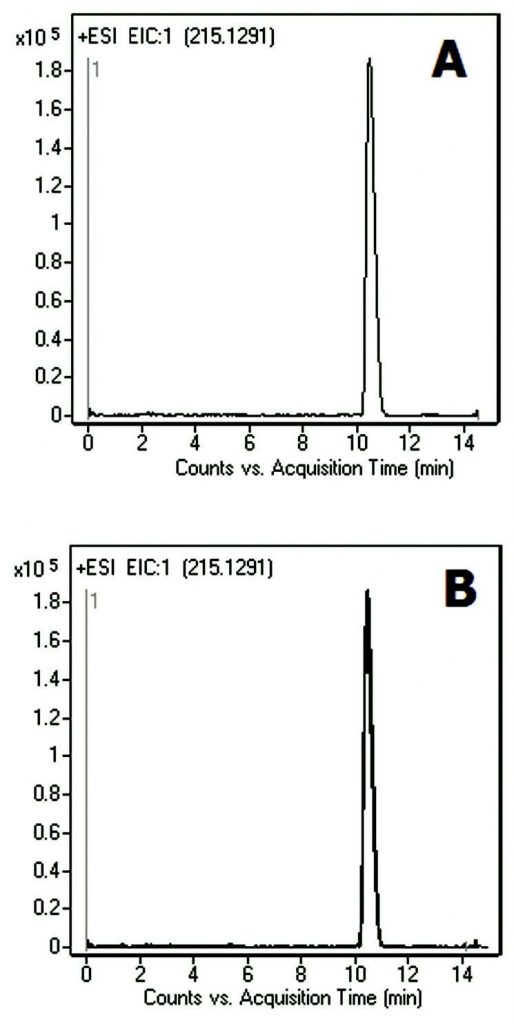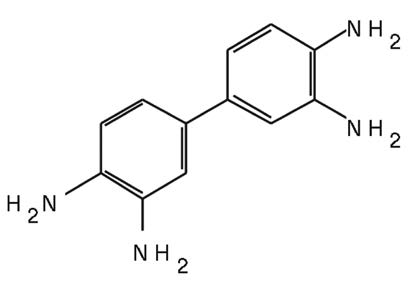Retention and Separation is Easy with this Method
3,3′-Diaminobenzidine (DAB) is a very challenging compound for analysis using HPLC with a UV detector. It is highly polar and hence difficult to retain when Reversed Phase HPLC Columns are used. Moreover, when there are a significant number of Silanol Groups present on the surface of the Column Stationary Phase, the Peak for DAB becomes very broad (5 – 10 minute Peak Width).
As can be seen from the Chromatograms below, this Method is an excellent choice for the analysis of DAB and resolves the issues of band broadening. The Peak shape is Symmetrical with high Efficiency.
The Repeatability of the Analysis is also remarkable as can be seen in a duplicate run shown in Figure B.
Peak:
3,3′-Diaminobenzidine 215.1291 m/z (M+H)+
Method Conditions:
Column: Cogent Diamond Hydride™, 4µm, 100Å
Catalog No.: 70000-15P-2
Dimensions: 2.1 x 150mm
Mobile Phase:
—A: 50:50 DI Water / Methanol with 0.1% Formic Acid
—B: Acetonitrile with 0.1% Formic Acid
Gradient:
| Time (minutes) | %B |
| 0 | 80 |
| 4 | 30 |
| 9 | 30 |
| 10 | 80 |
Post Time: 5 minutes
Injection vol.: 1µL
Flow rate: 0.4mL / minute
Detection: ESI – POS – Agilent 6210 MSD TOF Mass Spectrometer
Sample preparation:
—Working Solution: Stock solution was diluted 1:100 with 50:50 Solvent A / Solvent B mixture.
—Stock Solution: 1mg / mL in DI Water Diluent. The Solution was filtered through a 0.45µm Nylon Syringe Filter (MicroSolv Tech Corp.).
t0: 0.9 minutes
Notes: DAB reacts with Hemoglobin (an oxidation reaction catalyzed by the Heme Groups) in the presence of Hydrogen Peroxide producing a dark brown color. This reaction is used to stain cells that were prepared with hydrogen peroxidase enzyme. DAB tablets are used in immuno-histology for the detection of peroxidase activity. Diaminobenzidine is a known mutagen (a compound that can induce changes in the genetic information of an organism).
Attachment
No 151 Diaminobenzidine Analyzed with LCMS pdf 0.4 Mb Download File




